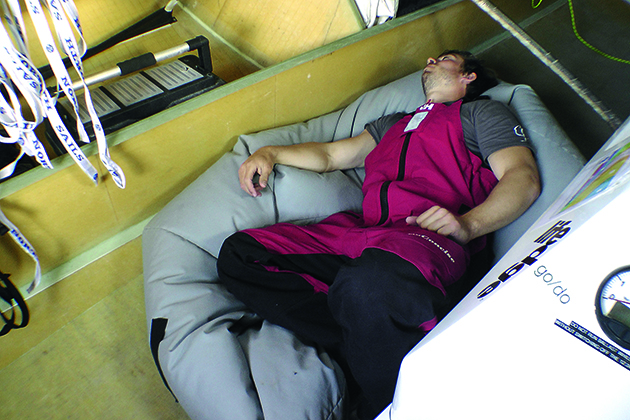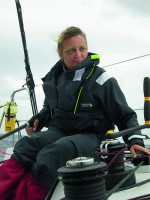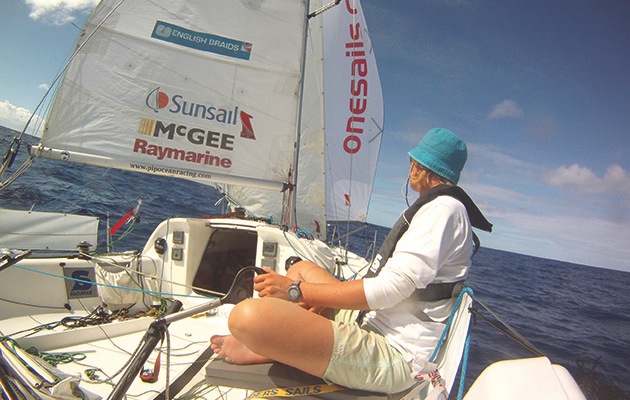Solo sailor Pip Hare advises how to get the best out of short-handed sailing by planning times to sleep and times to work together
Before you decide on the best way to run watches double-handed, answer this question: are you sailing double-handed or single-handed in shifts? Successful double-handed teams pushing hard together have often beaten fully crewed entries. To make the most of sailing two-up you both need to be sailing.
Consider at what times over the course of the race will having two people on deck actively sailing make the biggest impact on your speed and when will it make less difference? What are your greatest strengths and weaknesses? How will predicted weather conditions affect your performance over the upcoming days?
Watch patterns
How you manage watches and sleep will depend on adapting to conditions, who you are sailing with, any damage to the boat, where your competition is and just how competitive you are feeling. Everyone is different and we cope with physical and mental exertion at different levels and in different ways.
If one of you needs less sleep than the other, then play to that strength, spend more time with both on deck together.
Don’t be afraid to change your watch patterns over the course of a race, and on longer races ensure you are considering your sleeping strategy as an integral part of navigational planning.
Match sleep to the weather
Matching sleep patterns to the weather ensures you don’t miss out on golden opportunities to make miles. Look for the times when having both of you alert and awake, driving the boat, will make a difference. Push yourselves hard to make it through those times: think pumping the main or trimming the kite while one of you is helming, both being on deck for a sail change at the exact moment a front goes over or having the confidence to push on with the spinnaker in those extra three knots of wind because you are both on deck to take it down if things go wrong.
Sailing upwind is often the time to bank some sleep. Autopilots are good at steering upwind and reefing the mainsail is a job easily handled by one. This is a time I would switch to longer watches (sleeping on the high side, of course) to get rested, eat well and save your energy for harder times.

Temperature may also affect the length of a watch: in low latitudes the heat and lack of shade can be difficult, you may choose to run strict short watches during the day, but both push overnight when it is cooler. You might also choose shorter watches in extreme bad weather with the off watch co-skipper sleeping fully kitted up ready to run on deck.
Running a strict watch system allows both of you to have the same – decent – amount of sleep, while other duties such as routine maintenance and navigation can be split between co-skippers to do off-watch.
I choose to fall back on this system if both crew need to recharge their batteries or if having two people on deck would make very little impact on the overall boat speed. Consider the length of your watches, taking into account that it takes around 90-120 minutes to complete a full sleep cycle, and the average time anyone can sustain a high level of concentration is four hours.
Set up your watch system around the maximum time you are happy for your co-skipper to stay on deck, agree to include changing, ablutions and making the tea in off-watch time to ensure no one person is left on deck alone for too long.
Be honest with each other
Extreme tiredness and lack of energy can creep up on even the most accomplished ocean sailor and being honest with yourself and also your co-skipper about injuries, tiredness and performance is crucial to success. Always check your performance against the boat’s polars, if you are alone on deck and struggling to get the boat going, then call up your co-skipper and work on it together.
Be honest with each other about your levels of motivation and how hard you are prepared to push before the race; pushing someone else outside their own acceptable levels of discomfort can be counterproductive. Understanding what these levels are before the start will help to manage conflict on the water.
Learn to nap
Napping is not just for single-handers; learning how to do this will really help your performance. A 20-minute nap will significantly increase your alertness and short-term energy levels. However, sleeping for more than 30 minutes may lead to sleep inertia, making it very hard to wake up.
If you are both struggling with tiredness consider taking alternate short naps until one of you feels alert enough to stay up for a full sleep cycle of 90-120mins while the other crashes.
Quick tips
- If sleeping in foulweather gear, invest in a fleece and Gore-tex blanket to wrap yourself in; your body temperature drops around 1° when you sleep.
- Tuck a mobile phone with a vibrating alarm inside your mid-layer against your collarbone, this can rouse you from deep sleep when a sound alarm may not.
- For most people 0200-0400 is the time in our circadian rhythms we most struggle to stay awake, so consider managing this time with alternate short naps.
- Dehydration will make you sleepy. If you are starting to feel tired, drink water or an electrolyte drink. This should help boost your alertness in the short term.

Single-handed ocean sailor Pip Hare has clocked up thousands of miles racing and cruising. Among her achievements are five solo transatlantics, including the OSTAR and two Mini Transat races. She also works full-time for the RNLI on sea safety and is Consulting Editor on Yachting World. See her gear test on weather routeing packages
See also Pip’s fascinating series on advanced sailing techniques: SAIL FASTER SAIL SAFER




